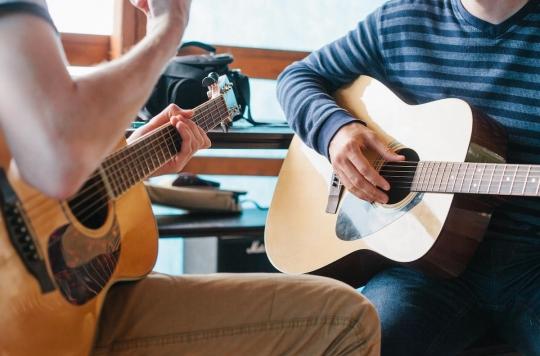Making music together, singing or playing an instrument, would have many benefits on the human brain.

- When individuals sing or play music together, five social functions and brain mechanisms are activated in their brains.
- Sharing music could reduce disputes between individuals and promote better communication.
Listening to music has many virtues: reducing anxiety, increasing well-being, improving sleep, etc. According to a study published in the journal American Psychologist, singing or playing it with other people could have even more benefits! To reach this conclusion, the researchers studied what happens in the brain when people make music together. The idea for this work came to them in particular from initiatives put in place during the Covid-19 pandemic: songs between neighbors from their balconies, choir sessions by video, or even live concerts. All these events have in common the sharing of music at the same time. The team therefore wanted to understand why the participants preferred this option to listening or individual practice.
5 social functions and brain mechanisms are activated
Using models from neuroscience and their research, scientists have developed a new map of the brain. This highlights five social functions and brain mechanisms that are activated when music is shared. These are the circuits of empathy, reward and motivation – including the release of dopamine -, language structures and, finally, the secretion of oxytocin and cortisol, two hormones. In detail, the benefits of these five elements are numerous. Empathy helps humans adapt to the way other people think and feel. Oxytocin – also called the love hormone – contributes to the feeling of social connection with others. It is secreted when people sing together, even when the singing is improvised. Dopamine, on the other hand, is a neurotransmitter that provides a feeling of pleasure. It is secreted when an individual anticipates and expects a musical sharing. Language structures in the brain are involved in musical dialogue when individuals take turns singing or playing an instrument. Finally, the level of cortisol, a hormone that contributes to stress, drops in the brain when people sing together and when they listen to music in a group.
Music to solve social problems and bring people together
Previously, the cognitive neuroscience of music focused on just listening to it, especially on an individual basis. This study therefore lays the groundwork for a better understanding of the social neuroscience of music. The authors believe that it could help improve social ties around the world and be an important tool for bringing people together and reducing social problems. According to them, a better scientific understanding of how music provides social connections between individuals helps to underline that this art is not mere entertainment, but rather an essential feature of human existence with important social implications. . “Music connects us to our humanity, points out David Greenberg, one of the authors. Thanks to social neuroscience, we can discover that our sense of social connection is not only subjective, but is rooted in important brain mechanisms. Especially at a time when there are social divisions across the world, we must find new ways to bring conflicting cultures together. Music is one of those ways”.
.















